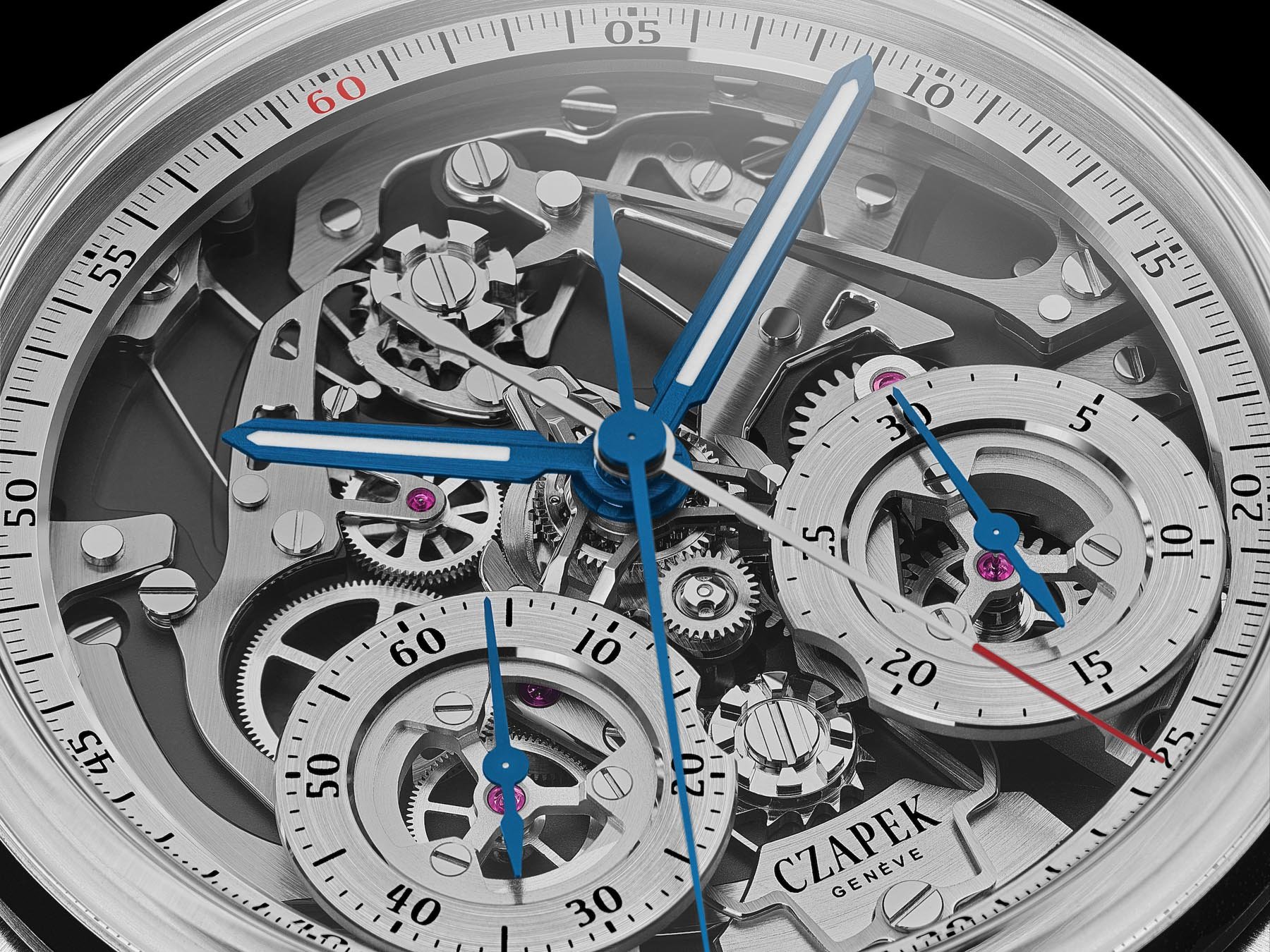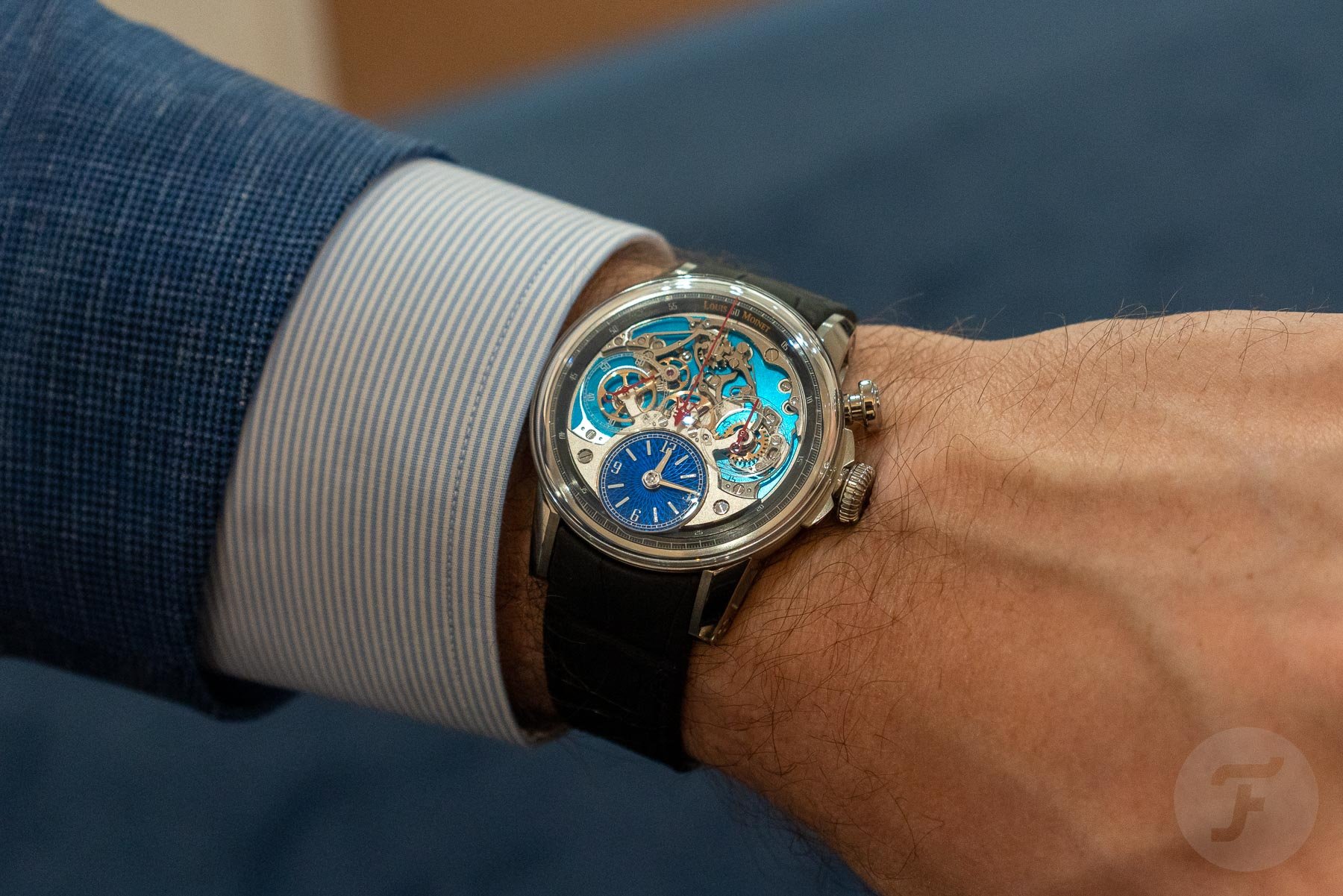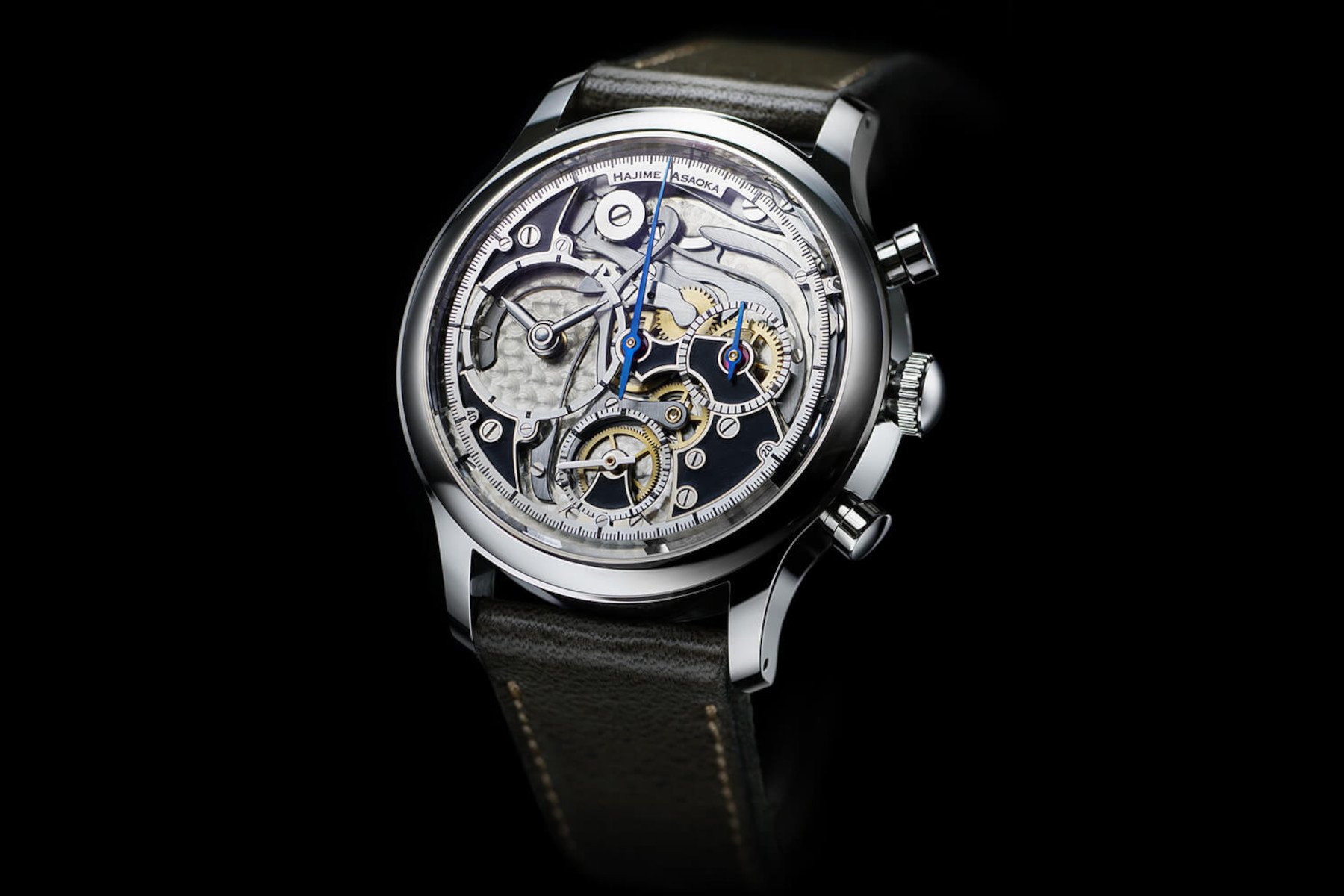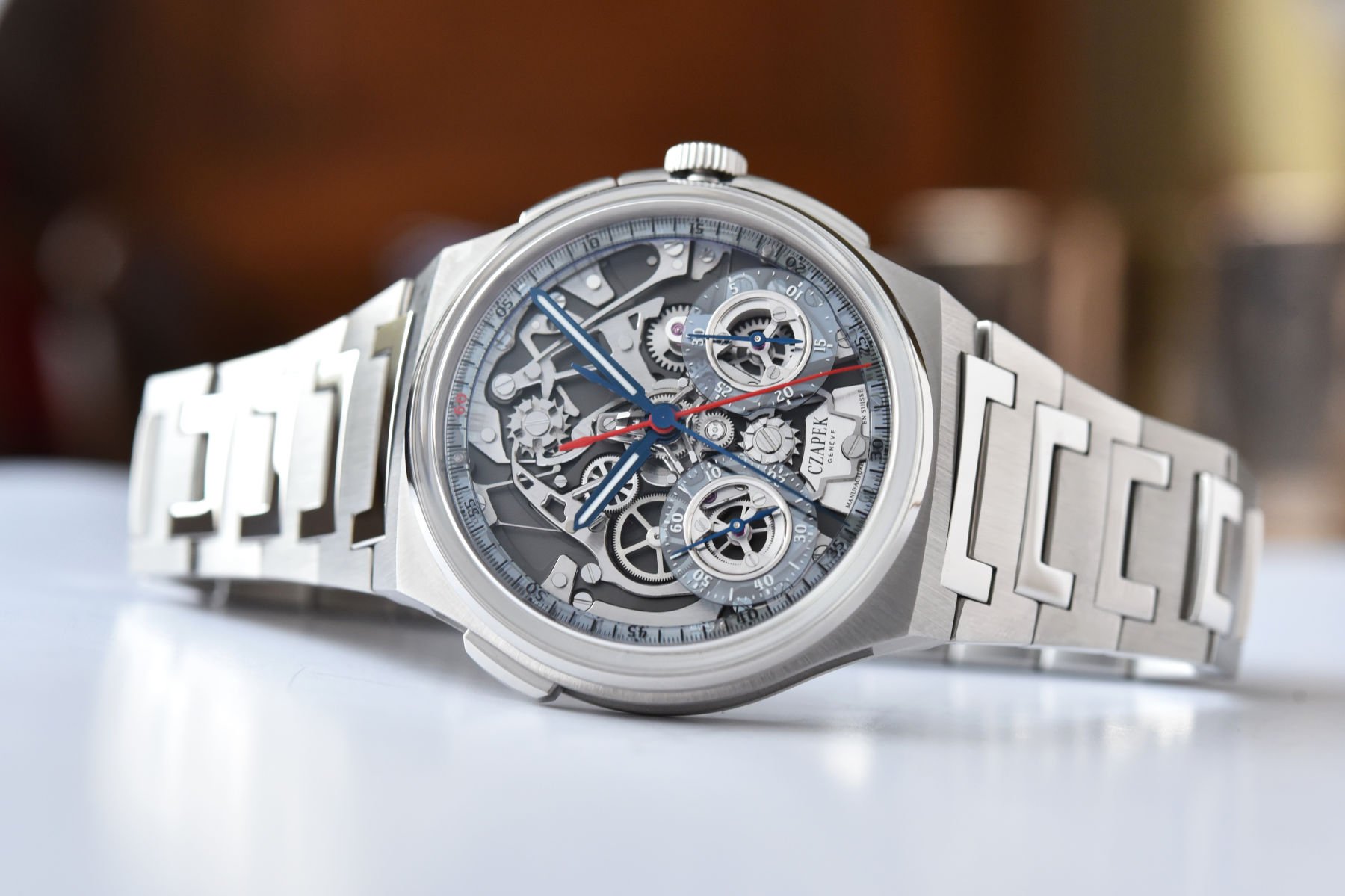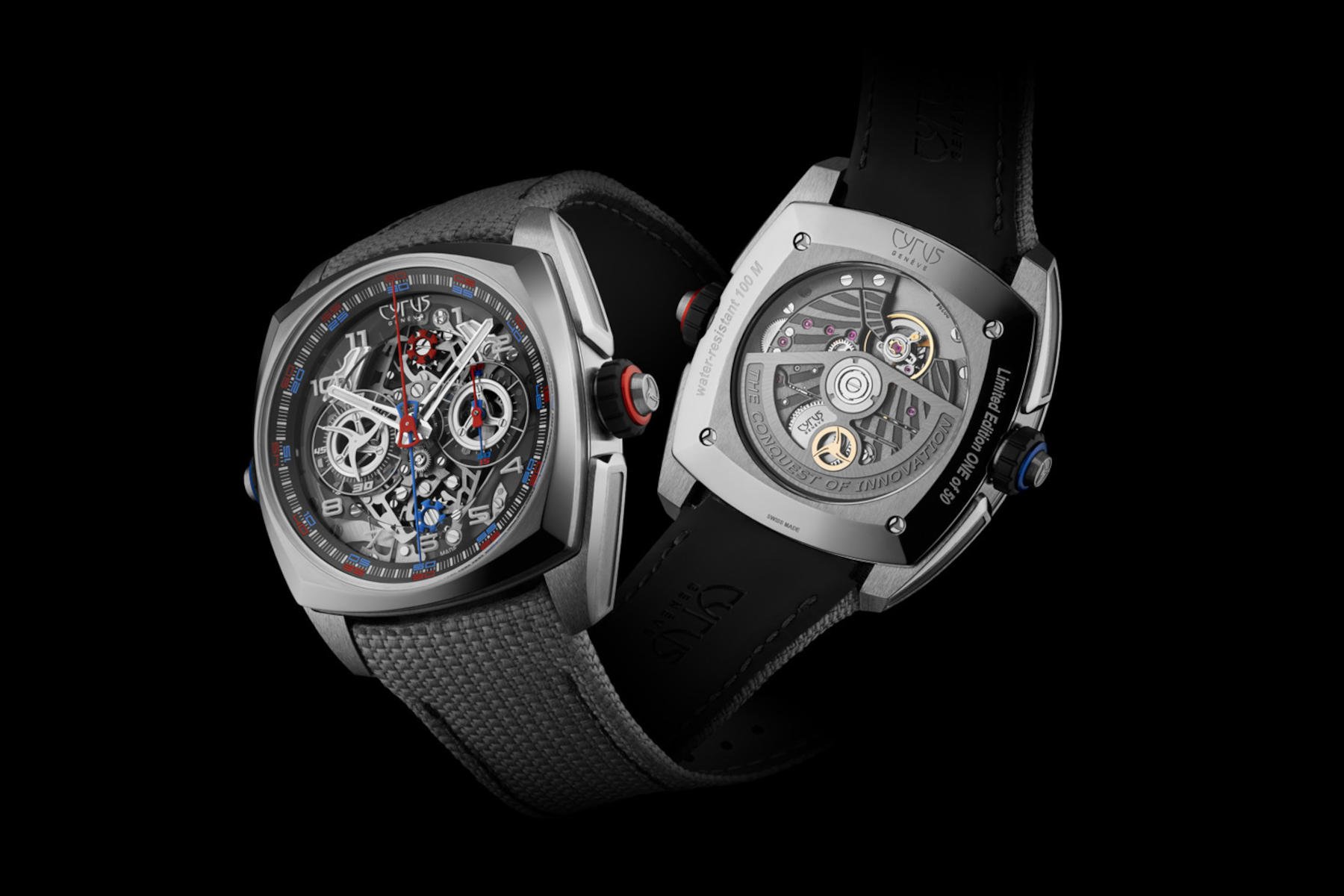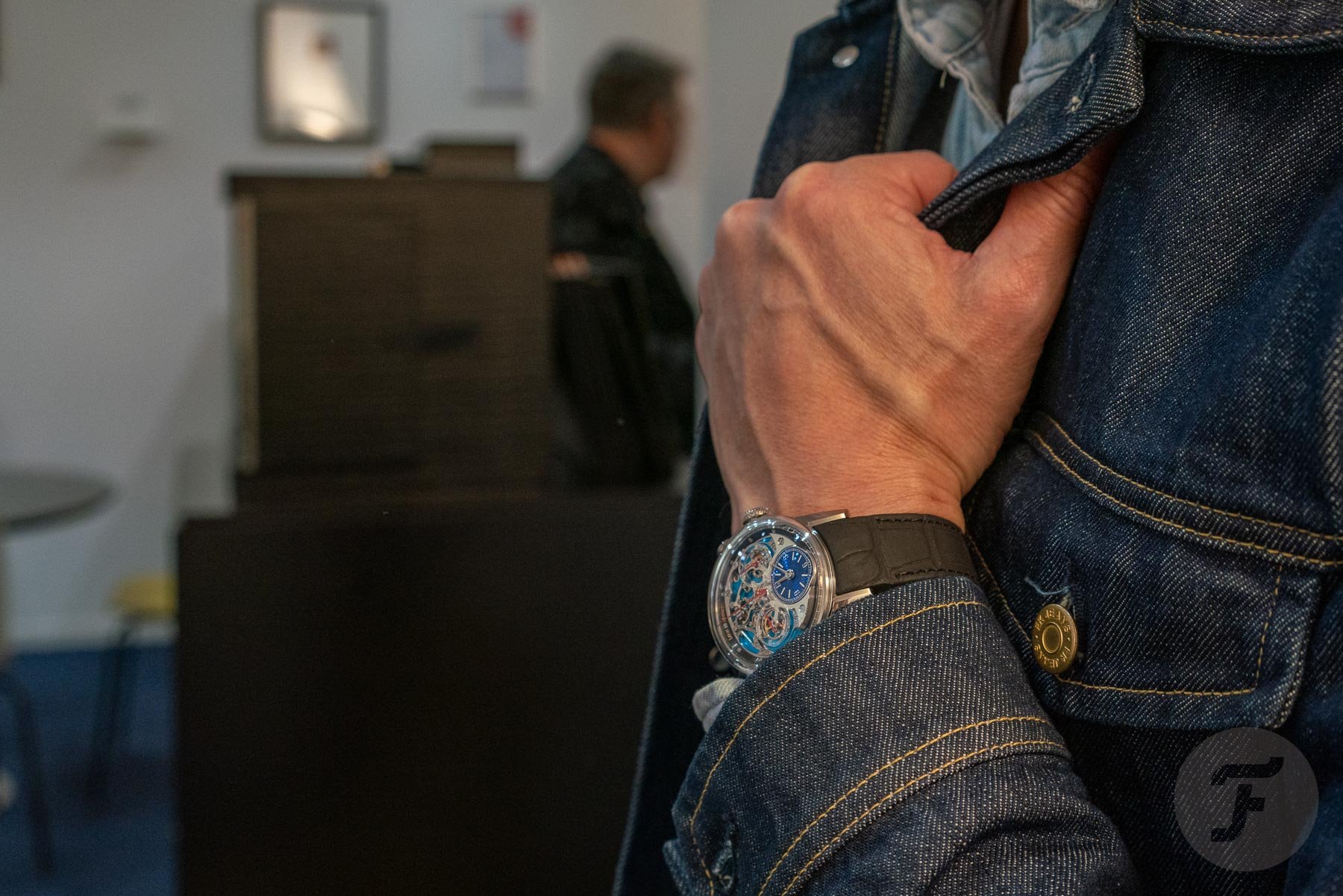The Beauty Of The Chronograph — Looking At The Best Dial-Side Chronograph Watches
In watchmaking circles, the chronograph is widely accepted as a hard-to-master complication. The wonderfully complex and intricate mechanism is a joy to behold, yet the majority of the works are relegated to the rear side of the movement. If they’re so great, then why “hide” them around the back? I mean, if you have a chronograph watch in your collection with an open case back, you’ll know how fascinating it is to look at. Thankfully some brands offer dial-side chronographs so we can gawp and enjoy these wonderful mechanical marvels.
Pressing the buttons and watching the parts move is a joy to behold, but it’s a hassle to take the watch off to view this marvel through the case back. It would appear that some watchmakers agree with this travesty and have worked on moving the chronograph mechanisms to the dial side to show them off in all their glory. Sadly, such examples are few and far between, so I decided to look at what I believe to be the best dial-side chronographs.
Dial-side is better!
I wanted to be quite particular with the watches I chose here. I didn’t want to choose skeletonized watches that sort of allow you to see through to their inner workings. That’s cheating. I wanted watches that put the chronograph mechanism front and center to truly celebrate it. I’m not expecting all of our readers to like all of these watches, but I hope there’s something for everyone. So, without further ado, and in no particular order…
Louis Moinet Memoris Spirit
First up is the most recently released watch on the list. Louis Moinet is perhaps most well-known for its beautiful artistic watches, all in larger cases measuring 46mm. Fine art often needs a large canvas to display all the details and intricacies… Or so I thought. With the launch of the Memoris Spirit Chronograph, the Louis Moinet watchmakers squeezed a 311-component movement into a 40.7mm case. It becomes even more impressive when you remember that the movement is the same as the larger 46mm Memoris Chronograph. Somehow, decreasing the size did not lessen the visual impact; instead, it amplified it. The smaller Memoris Spirit manages to outshine its larger predecessor with ease.
The Memoris Spirit is a mono-pusher chronograph with a central chronograph seconds hand and two sub-dials. One counts the chronograph minutes, and the other is the going seconds. You can read the hours and minutes on the small time dial at 6 o’clock. The minutes and seconds sub-dials use a transparent sapphire disc with simple white markings to allow for a fully-unobstructed view of the chronograph in operation. The column wheel takes pride of place at 12 o’clock.
The Calibre LM96 uses 147 components for the upper part dedicated to the chronograph and 164 components for the lower part corresponding to the self-winding movement. Alongside a frequency of 28,800vph and a power reserve of 48 hours, the movement delivers all the classic Swiss decorations we’d expect from a Louis Moinet movement — Clous de Paris hobnail patterns, Fleur de Lis engraving, circular satin-finished gear trains, and diamond-polished sinks.
Price: €29,500
Read more about the Louis Moinet Memoris Spirit Chronograph.
Hajime Asaoka Chronograph
Hajime Asaoka is perhaps more commonly known for his sub-brand Kurono Tokyo. While Kurono offers watches are more affordable price points, Hajime Asaoka’s finest work is his handmade watches like the stunning Asaoka Chronograph shown above. This is even more impressive when you realize that he taught himself watchmaking using the book Watchmaking by George Daniels and YouTube tutorials while using tools that he bought from eBay.
Asaoka used one of his previous watches, the Tsunami (a simple three-hand watch), as the base when designing his chronograph movement. The original Tsunami movement used a powerful mainspring in a massive barrel inside a small 37mm case. To solve the space-limiting problem of the enormous mainspring barrel, Asaoka moved the second wheel to the 9 o’clock position, which also decentered the hour/minutes to 9 o’clock. He then used the space on the dial side to install additional wheels to move the decentered hours/minutes back to the center of the dial.
Why is this relevant? Well, instead of moving the hour/minutes back to the center for his chronograph, he left them in place as a sub-dial at 9 o’clock. He then used the space previously occupied by the gear train to recenter the elapsed seconds and display the chronograph works on the dial side. The chronograph works are entirely new and built from scratch to his own design. The fact that Asaoka fits all of this into a 38mm case that is only 11mm tall makes it even more impressive.
Price: ~€86,600
Read more about the Hajime Asaoka Chronograph.
Czapek Antarctique Rattrapante
It’s no secret that we are big Czapek fans here at Fratello. This is evidenced by the successful Fratello × Czapek Passage de Drake that we launched last year. But that wasn’t the only big release for Czapek in 2021. At Geneva Watch Days, the brand wowed the watch world with the mighty-impressive Antarctique Rattrapante. Predictably, it sold out in a flash, as did the follow-up Ice Blue model earlier this year. According to Czapek, its Antarctique Rattrapante was the first split-second chronograph with dial-side works. I can’t think of a predecessor in that category, but if you can, please let me know in the comments.
I became fascinated by watches thanks to a skeleton watch. Seeing the beautiful mechanical workings of a watch is something I can’t help but get excited about, especially when they’re displayed as beautifully as in Czapek’s proprietary caliber SXH6. The SHX6 is made in conjunction with Chronode. Due to the complexity of the movement (a grand complication that places a split-seconds module below a chronograph movement), the Antarctique case grew from 40mm to 42.5mm. Now, I’m going to have to quote my colleague, Rob Nudds here, as technical watchmaking is not my area of expertise:
“In the center of the movement sits a ‘tripod’ bridge. It holds down a patented satellite minute train and the patent-pending split-second mechanism. There are two column wheels, one for the chronograph and one for the split-seconds mechanism. The sub-dials show the elapsed minutes (at 4 o’clock) and the running seconds (at 8 o’clock). Most significant when it comes to the architecture of the SHX6 is the decision to go with a horizontal rather than a vertical clutch. According to Czapek, this ‘highlights the aesthetics of transmission.'”
I wouldn’t have been able to articulate such a description of the movement myself. I think it’s hard to argue that this movement is not one of the most beautiful dial-side chronographs around.
Price: €48,700
Read more about the Czapek Antarctique Rattrapante.
Cyrus Klepcys DICE
If you liked Czapek’s SXH6 movement, you might also like the Cyrus Klepcys DICE. The man who designed the wonderfully complex DICE movement is none other than Jean-Francois Mojon. Mojon is the genius behind movement manufacturer Chronode. Mojon’s manufacture is responsible for countless award-winning calibers, such as the SXH6, MB&F’s Legacy Machine No.1, and HYT’s original liquid movements. In 2010, Mojon won the GPHG award for “best independent master watchmaker”, a testament to his horological wizardry. In fact, if you compare the SXH6 and the Klepcys DICE’s automatic caliber CYR718 side by side, you’ll notice some structural similarities, a nod to the fact that both came from the mind of Mojon.
If you’re asking what the “DICE” part of the name is all about, that’s fair enough. It’s an abbreviation for Double Independent Chronograph Evolution. In a nutshell, the Klepcys DICE features two dial-side chronographs that can measure time independently or simultaneously. The concept is similar to the recently released MB&F LM Sequential Evo. Still, the Klepcys uses two centrally mounted seconds hands and counts minutes on a single sub-dial featuring two hands. Cyrus uses contrasting colors of red and blue to differentiate between the two chronographs in a nice, playful aesthetic. Even the columns wheels for each chronograph are red and blue, respectively.
For those interested in the Cyrus Klepcys DICE, be aware of one thing. Official specifications put the watch at 42mm in diameter, but that’s a little misleading based on my own interactions with the brand’s watches. The width at the slimmest part of the case (between the two crowns) is indeed 42mm. However, that’s such a small part of the case that the “true” diameter is 44mm. At 16.5mm thick, the Cyrus Klepcys DICE is on the larger side, but thanks to the titanium case, this is somewhat offset into a rather enjoyable wearing experience.
Price: €31,000 (titanium), €32,000 (DLC)
Read more about the Cyrus Klepcys DICE.
What do you think? Do you prefer dial-side chronographs?
Out of these four watches, which is your favorite and why? Do you own any of them? Have I left anything off the list? As always, please let me know in the comments!
Follow me on Instagram: @davesergeant | @fratellowatches

